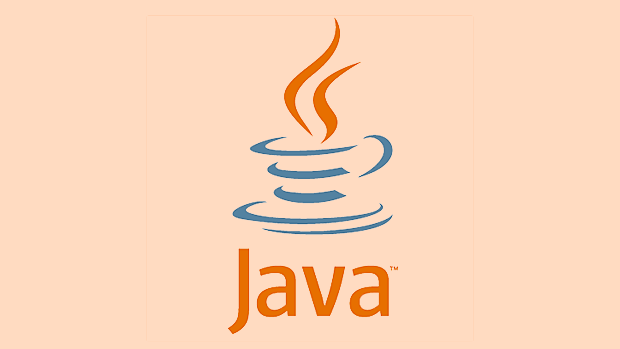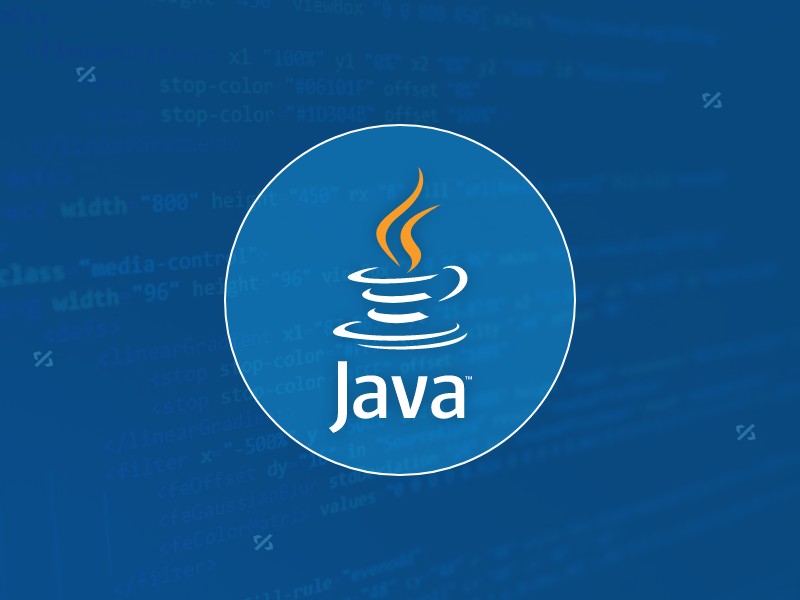What are the best practices for writing concurrent Java code?
Jul 10, 2025 am 11:48 AMWhen writing efficient and thread-safe concurrent Java code, the following points should be followed: 1. Use tool classes in the java.util.concurrent package, such as ConcurrentHashMap, CopyOnWriteArrayList, and BlockingQueue, to improve performance and reliability; 2. Use thread pools (such as ExecutorService or ForkJoinPool) to manage thread resources reasonably, and set the appropriate number of threads according to the task type; 3. Avoid sharing mutable state, give priority to using immutable objects, and use atomic classes or locking mechanisms to ensure thread safety if necessary; 4. Pay attention to avoid deadlocks, live locks and resource hunger issues. You can use jstack tools to troubleshoot deadlocks, and ensure that multiple locks are obtained in the same order.

The key to writing concurrent Java code is to take into account performance and thread safety. Java provides a wealth of concurrency tool classes and mechanisms, but it is easy to cause problems if it is not used properly. The following points are a summary of more practical experience in actual development.

Use the tool class in java.util.concurrent package
The java.util.concurrent package introduced by JDK5 greatly simplifies concurrent programming. for example:

-
ConcurrentHashMap: A more efficient thread-safe Map thanCollections.synchronizedMap -
CopyOnWriteArrayList: suitable for scenarios where more reads, less writes, -
BlockingQueueimplementation classes (such asLinkedBlockingQueue) : Very suitable for use in producer-consumer models
These classes are fully tested and optimized, which are more reliable than locking yourself and can also reduce the risks of deadlock and race conditions.
Use thread pools reasonably instead of creating threads frequently
Frequently new Thread is inefficient and resource-consuming. It is recommended to use ExecutorService or ForkJoinPool to manage thread resources:

- Create a fixed-size thread pool using
Executors.newFixedThreadPool(n) - For asynchronous tasks or parallel computing, you can consider using
CompletableFuturewith ForkJoinPool
Note that you set the appropriate number of threads according to the task type. For example, CPU-intensive tasks are usually set to the number of CPU cores, while I/O-intensive can be increased appropriately.
Avoid sharing mutable states and prioritize immutable objects
Multiple threads are most likely to have problems when accessing the same data. Solutions include:
- Try to avoid shared variables, or design shared variables as immutable
- If you have to modify the state, you can use
synchronized,ReentrantLockto lock, or use atomic classes likeAtomicInteger
For example:
private AtomicInteger counter = new AtomicInteger(0); counter.incrementAndGet(); // Thread-safe operation
This method is more efficient than synchronizing the entire method and is easier to control the granularity.
Pay attention to deadlocks, live locks and resource hunger issues
One of the most hidden problems in concurrent programs is deadlock. Common reasons include:
- Multiple threads acquire multiple locks in different orders
- The lock is not released or the waiting condition is not met, causing the thread to be blocked continuously
To troubleshoot deadlocks, you can use the jstack tool to view thread stack information. Also, try to avoid nested locks. If multiple locks must be used, make sure all threads are acquired in the same order.
Basically that's it. Concurrent programming itself is complicated, but as long as you master the tools and patterns, many problems can be avoided.
The above is the detailed content of What are the best practices for writing concurrent Java code?. For more information, please follow other related articles on the PHP Chinese website!

Hot AI Tools

Undress AI Tool
Undress images for free

Undresser.AI Undress
AI-powered app for creating realistic nude photos

AI Clothes Remover
Online AI tool for removing clothes from photos.

Clothoff.io
AI clothes remover

Video Face Swap
Swap faces in any video effortlessly with our completely free AI face swap tool!

Hot Article

Hot Tools

Notepad++7.3.1
Easy-to-use and free code editor

SublimeText3 Chinese version
Chinese version, very easy to use

Zend Studio 13.0.1
Powerful PHP integrated development environment

Dreamweaver CS6
Visual web development tools

SublimeText3 Mac version
God-level code editing software (SublimeText3)

Hot Topics
 How Java ClassLoaders Work Internally
Jul 06, 2025 am 02:53 AM
How Java ClassLoaders Work Internally
Jul 06, 2025 am 02:53 AM
Java's class loading mechanism is implemented through ClassLoader, and its core workflow is divided into three stages: loading, linking and initialization. During the loading phase, ClassLoader dynamically reads the bytecode of the class and creates Class objects; links include verifying the correctness of the class, allocating memory to static variables, and parsing symbol references; initialization performs static code blocks and static variable assignments. Class loading adopts the parent delegation model, and prioritizes the parent class loader to find classes, and try Bootstrap, Extension, and ApplicationClassLoader in turn to ensure that the core class library is safe and avoids duplicate loading. Developers can customize ClassLoader, such as URLClassL
 Asynchronous Programming Techniques in Modern Java
Jul 07, 2025 am 02:24 AM
Asynchronous Programming Techniques in Modern Java
Jul 07, 2025 am 02:24 AM
Java supports asynchronous programming including the use of CompletableFuture, responsive streams (such as ProjectReactor), and virtual threads in Java19. 1.CompletableFuture improves code readability and maintenance through chain calls, and supports task orchestration and exception handling; 2. ProjectReactor provides Mono and Flux types to implement responsive programming, with backpressure mechanism and rich operators; 3. Virtual threads reduce concurrency costs, are suitable for I/O-intensive tasks, and are lighter and easier to expand than traditional platform threads. Each method has applicable scenarios, and appropriate tools should be selected according to your needs and mixed models should be avoided to maintain simplicity
 Understanding Java NIO and Its Advantages
Jul 08, 2025 am 02:55 AM
Understanding Java NIO and Its Advantages
Jul 08, 2025 am 02:55 AM
JavaNIO is a new IOAPI introduced by Java 1.4. 1) is aimed at buffers and channels, 2) contains Buffer, Channel and Selector core components, 3) supports non-blocking mode, and 4) handles concurrent connections more efficiently than traditional IO. Its advantages are reflected in: 1) Non-blocking IO reduces thread overhead, 2) Buffer improves data transmission efficiency, 3) Selector realizes multiplexing, and 4) Memory mapping speeds up file reading and writing. Note when using: 1) The flip/clear operation of the Buffer is easy to be confused, 2) Incomplete data needs to be processed manually without blocking, 3) Selector registration must be canceled in time, 4) NIO is not suitable for all scenarios.
 Best Practices for Using Enums in Java
Jul 07, 2025 am 02:35 AM
Best Practices for Using Enums in Java
Jul 07, 2025 am 02:35 AM
In Java, enums are suitable for representing fixed constant sets. Best practices include: 1. Use enum to represent fixed state or options to improve type safety and readability; 2. Add properties and methods to enums to enhance flexibility, such as defining fields, constructors, helper methods, etc.; 3. Use EnumMap and EnumSet to improve performance and type safety because they are more efficient based on arrays; 4. Avoid abuse of enums, such as dynamic values, frequent changes or complex logic scenarios, which should be replaced by other methods. Correct use of enum can improve code quality and reduce errors, but you need to pay attention to its applicable boundaries.
 What is an anonymous inner class?
Jul 07, 2025 am 02:18 AM
What is an anonymous inner class?
Jul 07, 2025 am 02:18 AM
Anonymous internal classes are used in Java to create subclasses or implement interfaces on the fly, and are often used to override methods to achieve specific purposes, such as event handling in GUI applications. Its syntax form is a new interface or class that directly defines the class body, and requires that the accessed local variables must be final or equivalent immutable. Although they are convenient, they should not be overused. Especially when the logic is complex, they can be replaced by Java8's Lambda expressions.
 How to handle exceptions properly in Java?
Jul 06, 2025 am 02:43 AM
How to handle exceptions properly in Java?
Jul 06, 2025 am 02:43 AM
The key to handling exceptions in Java is to catch them, handle them clearly, and not cover up problems. First, we must catch specific exception types as needed, avoid general catches, and prioritize checkedexceptions. Runtime exceptions should be judged in advance; second, we must use the log framework to record exceptions, and retry, rollback or throw based on the type; third, we must use the finally block to release resources, and recommend try-with-resources; fourth, we must reasonably define custom exceptions, inherit RuntimeException or Exception, and carry context information for easy debugging.
 What is a Singleton design pattern in Java?
Jul 09, 2025 am 01:32 AM
What is a Singleton design pattern in Java?
Jul 09, 2025 am 01:32 AM
Singleton design pattern in Java ensures that a class has only one instance and provides a global access point through private constructors and static methods, which is suitable for controlling access to shared resources. Implementation methods include: 1. Lazy loading, that is, the instance is created only when the first request is requested, which is suitable for situations where resource consumption is high and not necessarily required; 2. Thread-safe processing, ensuring that only one instance is created in a multi-threaded environment through synchronization methods or double check locking, and reducing performance impact; 3. Hungry loading, which directly initializes the instance during class loading, is suitable for lightweight objects or scenarios that can be initialized in advance; 4. Enumeration implementation, using Java enumeration to naturally support serialization, thread safety and prevent reflective attacks, is a recommended concise and reliable method. Different implementation methods can be selected according to specific needs
 Java String vs StringBuilder vs StringBuffer
Jul 09, 2025 am 01:02 AM
Java String vs StringBuilder vs StringBuffer
Jul 09, 2025 am 01:02 AM
String is immutable, StringBuilder is mutable and non-thread-safe, StringBuffer is mutable and thread-safe. 1. Once the content of String is created cannot be modified, it is suitable for a small amount of splicing; 2. StringBuilder is suitable for frequent splicing of single threads, and has high performance; 3. StringBuffer is suitable for multi-threaded shared scenarios, but has a slightly lower performance; 4. Reasonably set the initial capacity and avoid using String splicing in loops can improve performance.






